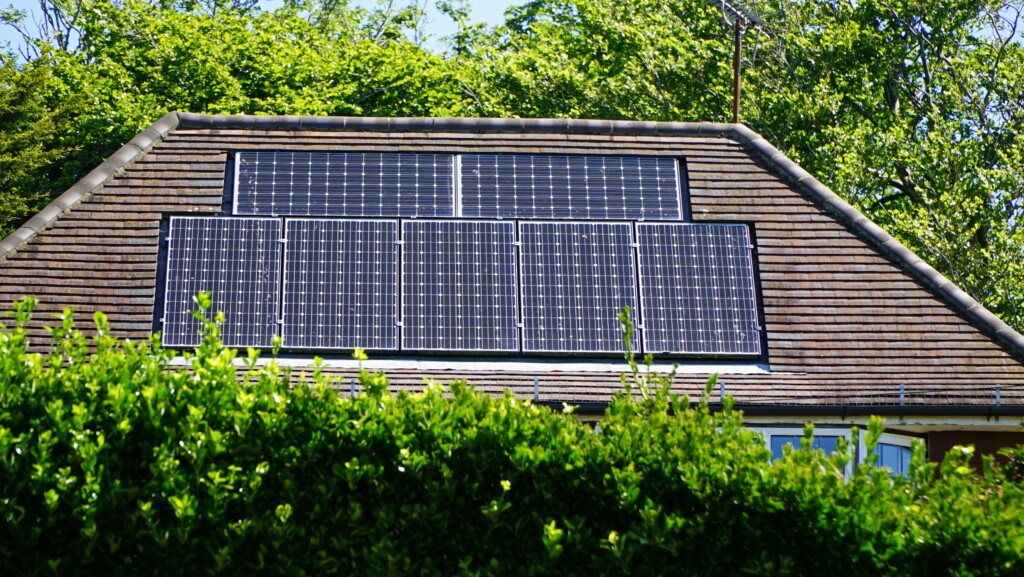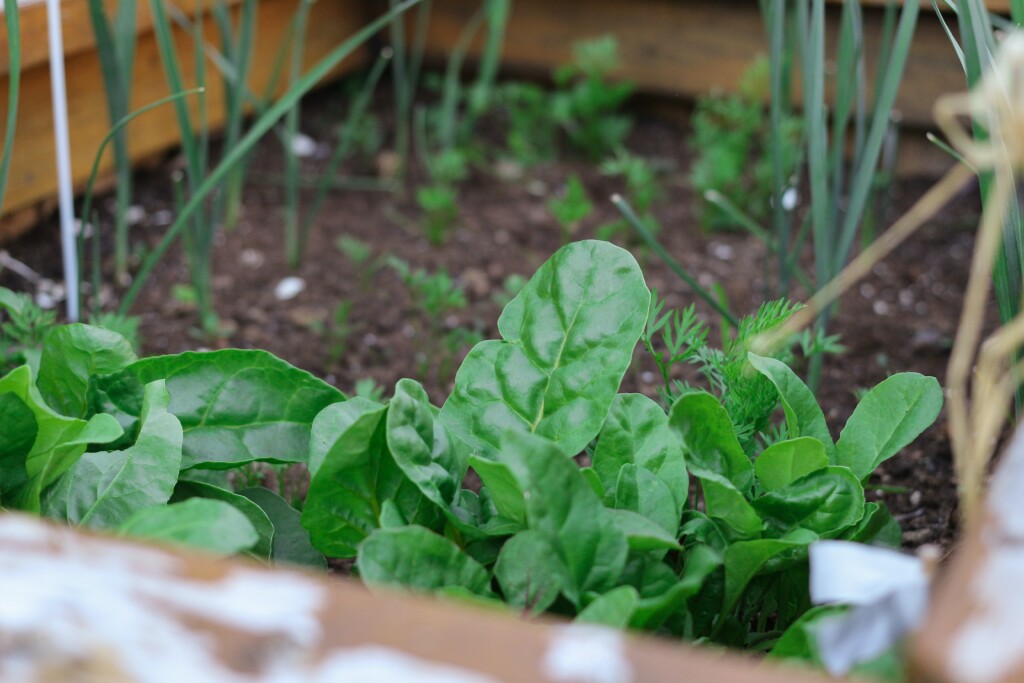Sustainable living is imperative for preserving our planet for future generations. It involves adopting practices that reduce our environmental impact by minimizing the use of natural resources and decreasing pollution, thereby combating climate change and preserving ecosystems. By choosing a sustainable lifestyle, we not only safeguard the environment but also improve our quality of life, ensuring that the Earth remains a livable place for all species, present and future.
Families play a pivotal role in fostering a sustainable future by acting as the foundational units that can drive significant environmental change. Their collective habits, consumer choices, and lifestyle practices have a cumulative impact on energy consumption, waste generation, and overall environmental footprint. When families embrace sustainable living—whether through adopting renewable energy, practicing mindful consumption, or instilling eco-conscious values in their children—they not only contribute to environmental conservation but also pass on a legacy of stewardship to subsequent generations, paving the way for a greener, more sustainable future for all.
Ready to give your family routine a green makeover? Dive into these eight easy-to-follow tips, and watch as sustainable living becomes a fun, everyday adventure for the whole household!
Embracing mindful energy use becomes a win-win situation: it’s beneficial for both our planet and your wallet! Cultivating a home environment that thrives on minimal energy consumption, thereby reducing reliance on traditional utilities and simultaneously assuring a diminished ecological impact, is not merely a thought but a practice. Incorporating energy sources like solar panels and geothermal heating, whilst an investment, can be pivotal in propelling your home towards more sustainable living and significantly cut down your monthly utility costs.
To dive deeper, let’s explore tangible, everyday practices families can implement to further minimize energy usage:
🌡️ Smart Thermostats: Investing in a smart thermostat allows you to regulate your home’s temperature efficiently, adapting to your family’s routines and minimizing energy usage when it’s not needed. According to the U.S. Department of Energy, you can save up to 10% annually on heating and cooling by simply turning your thermostat back 7°-10°F for 8 hours a day from its normal setting.
💡 LED Lighting: Transitioning to LED bulbs across your home can drastically cut down energy consumption related to lighting, as they use at least 75% less energy than traditional incandescent lighting. Additionally, LEDs have a longer lifespan — often up to 25,000 hours or more — which reduces the need for frequent replacements and thus minimizes waste.
🔋 Energy-Efficient Appliances: Opting for appliances that boast high energy efficiency ratings ensures they utilize minimum energy while performing their tasks, reducing overall usage. For instance, ENERGY STAR certified appliances save approximately 10%-50% of energy compared to their non-certified counterparts, which not only cuts costs but also lessens your environmental impact.
🧼 Mindful Washing: Ensure washing machines and dishwashers are run only when full, and explore colder washes where possible to lessen energy expended on heating. According to ENERGYSTAR, Water heating consumes about 90% of the energy it takes to operate a clothes washer. Unless you’re dealing with oily stains, washing in cold water will generally do a good job of cleaning. Switching your temperature setting from hot to warm can cut energy use in half. Using the cold cycle reduces energy use even more.
🪟 Adopting Natural Solutions: Harnessing natural light and ventilation as much as possible during the day minimizes dependence on artificial lighting and cooling systems. By strategically positioning window treatments, furniture, and mirrors, you can enhance daylighting, potentially reducing energy use from lighting by up to 25%–80%.
🌫️ Insulation: Proper insulation of your home to prevent heat from escaping during cooler months, and conversely, keeping it cooler during warmer months, lessens the need to utilize heating and cooling systems aggressively. Homeowners can save an average of 15% on heating and cooling costs by air sealing their homes and adding insulation in attics, which equates to an average annual savings of $200.
🔌 Unplug Devices: Establishing a routine where unused devices and appliances are unplugged, avoiding ‘phantom’ energy consumption, preserves energy and reduces costs. NRDC estimates that idle power costs U.S. consumers $19 billion per year, which translates to approximately $165 per household annually.

Implementing these practices not only embodies a commitment to reduced energy usage but also weaves sustainability into the very fabric of your family’s everyday life. Such steps ensure that the path towards eco-friendly living becomes synonymous with routine, rather than being viewed as an additional task. Remember, every small act counts towards crafting a future where sustainable living is the norm, not the exception.
Scaling back on meat consumption creates a ripple effect that positively touches both personal health and the wider environment. With the meat industry being notoriously linked to significant ecological concerns, including global warming, deforestation, and pollution, paring down and eventually minimizing meat intake can offer a substantial reduction in a household’s carbon footprint, concurrently weaving wellness into your dietary habits.
Here’s a deeper delve into practical, doable tips that families can embody to gradually reduce meat consumption:
🥩 Meatless Mondays: Dedicating specific days for vegetarian meals, such as the “Meatless Monday” initiative, encourages your family to explore plant-based meals at least once a week. The campaign, initiated by the U.S. during World War I and revived in 2003, asserts that omitting meat one day a week can reduce the risk of chronic conditions like cancer, cardiovascular disease, diabetes, and obesity.
🌱 Explore Plant-Based Proteins: Integrating a variety of plant-based proteins, like lentils, beans, and tofu, not only diversifies flavors but also ensures sufficient protein intake. The American Heart Association indicates that legumes, which are typically low in fat and high in fiber, can be a healthy substitute for meat which is often higher in fat and cholesterol.
🍳 Cook Together: Involving the whole family in cooking and experimenting with vegetarian and vegan recipes can be both a fun and educational bonding activity. Cooking at home has been associated with better diet quality and better diet adherence, according to a study published in the American Journal of Preventive Medicine.
⚖️ Balanced Transition: Gradually decreasing meat portions while increasing servings of vegetables, grains, and legumes ensures a balanced and gradual transition toward more plant-dominant meals. Harvard Medical School notes that such a dietary approach, where plant foods become the star and meat plays a supporting role, can improve both physical and environmental health.
🛍️ Mindful Shopping: Opting for local and seasonal produce when shopping and exploring farmers’ markets can directly support local farmers and reduce the carbon footprint linked to transporting goods. Pro-environmental consumption, like buying local produce, can also promote a sense of well-being and satisfaction.
📖 Education: Teaching children about the environmental and health benefits of reduced meat consumption and making the learning process engaging and interactive is crucial. The Journal of Academy Nutrition and Dietetics suggests that well-planned vegetarian diets are appropriate for all life stages, including childhood, and may provide health benefits in the prevention and treatment of certain diseases.
🍜 Diverse Cuisine Exploration: Venturing into cuisines that traditionally embrace vegetarian meals, like Indian or Mediterranean, enables exploration into rich, flavorful dishes that don’t center around meat. Traditional Mediterranean diets, which emphasize fruits, vegetables, and legumes, are associated with significant health benefits and can be beneficial for environmental sustainability.
🍴 Meal Planning: Thoughtful meal planning ensures that you can gradually reduce meat consumption without feeling deprived, providing a range of tasty, nutritious alternatives. A study in the International Journal of Behavioral Nutrition and Physical Activity highlighted that meal planning is associated with improved diet quality, greater diet variety, and a lower likelihood of obesity.

By incorporating these tips, your family embarks on a journey that doesn’t merely reduce meat consumption but also elevates awareness about sustainable practices in daily life. It fosters a conscious approach to eating, where every meal becomes a thoughtful choice that considers personal health and the wellbeing of our planet. This isn’t just a dietary change – it’s a lifelong investment in sustained wellbeing for all.
Taking steps toward eco-conscious living by incorporating eco-friendly alternatives into our daily routines can substantially minimize our collective environmental footprint. Small, consistent changes not only forge a path toward significant environmental impact but also inspire communities and future generations to tread lightly on our planet.
Embarking on a green journey? Here are practical and straightforward tips on how families can integrate specific eco-friendly products into daily life:
🥤 Reusable Water Bottles & Coffee Cups: Switching to reusable water bottles and coffee cups helps curb plastic pollution, as the production of plastic bottles for the U.S. alone uses about 17.6 billion pounds of oil annually, excluding the energy for transportation. According to the Environmental Protection Agency (EPA), Americans throw away about 25 billion styrofoam coffee cups every year.
🫧 Biodegradable Cleaning Products: Biodegradable cleaning products, which break down naturally and have less environmental impact, safeguard aquatic life by reducing the introduction of toxic substances into waterways. Volatile organic compounds (VOCs), found in conventional cleaning products, can impact indoor air quality and also contribute to outdoor smog formation.
🍴 Compostable Kitchenware: Using compostable kitchenware diminishes waste, as these items decompose into nutrient-rich material under the right composting conditions, mitigating landfill usage. Using compostable plastics can save up to 2/3 of the energy used in conventional plastic manufacturing.
🛍️ Reusable Shopping Bags: Employing reusable totes and produce bags helps reduce dependence on single-use plastic bags, of which up to a trillion are used globally every year. According to the Center for Biological Diversity, only 1% of plastic bags are returned for recycling, meaning that the rest end up in landfills or as litter.
🧴 Refillable Stations for Toiletries: Utilizing refillable stations for toiletries, such as shampoos and detergents, curtails plastic bottle purchases, addressing part of the approximately 552 million shampoo bottles thrown away annually in the USA alone. Refill stations are becoming increasingly available, with major retailers participating in reducing plastic waste through refill initiatives.
🩲 Cloth Diapers: Opting for cloth diapers over disposable ones not only curtails landfill waste but is also often gentler on an infant’s skin. The Environmental Protection Agency (EPA) reports that disposable diapers, which can take up to 500 years to decompose, account for more than 4.1% of solid waste in U.S. landfills.
🪥 Bamboo Toothbrushes: Replacing plastic toothbrushes with bamboo alternatives reduces plastic waste, as bamboo toothbrushes are biodegradable and sustainable. According to National Geographic, about 1 billion toothbrushes are thrown away annually in the USA, contributing significantly to landfill waste.
♻️ Recycled Paper Products: Choosing paper products made from recycled materials promotes waste reduction and sustainable forestry practices. Making recycled paper uses about 40% less energy than making paper from virgin wood pulp and can save many trees per ton of paper produced.
🫶 Supporting Sustainable Brands: Choosing brands that prioritize sustainability in their production practices supports ethical consumerism and responsible production.

Adopting eco-friendly products and practices demonstrates a commitment to sustainable living. It not only benefits the environment but also builds a foundation for future generations to cultivate mindful living practices. It’s in these daily, mindful choices that we carve out a sustainable future, embodying the belief that every small change culminates in a significant positive impact on our planet.
Embracing a paperless lifestyle manifests as a powerful shift for both your environmental imprint and financial savings. With the array of technological solutions available, such as various apps for lists, reminders, and document storage, the journey towards eliminating paper use evolves into an easy, advantageous habit that seamlessly merges with our daily routines.
Here are tangible tips on how families can journey towards a paperless lifestyle:
☁️ Digital Storage: Utilizing cloud storage like Google Drive or Dropbox not only negates the need for physical copies but also saves energy: a study by the Lawrence Berkeley National Laboratory found that moving software to the cloud could save enough electricity annually to power Los Angeles for a year. Moreover, cloud storage provides a secure and accessible means to retrieve data anytime, from anywhere with internet connectivity.
💻 Online Bill Payments: Adopting online payment methods helps to eliminate roughly 18.5 million trees cut down each year to produce paper bills and statements in the U.S. The PayItGreen Alliance also states that if 20% of American households switched to electronic bills, statements, and payments, 1.8 million trees would be spared each year.
🎫 E-Tickets and Boarding Passes: Using e-tickets and electronic boarding passes not only reduces printouts but also streamlines processes. Studies reveal that if all airline passengers used mobile boarding passes, it could save 50,000 mature trees annually, which is equivalent to printing a Sunday edition of a major newspaper.
📰 Digital Subscriptions: Digital subscriptions of newspapers and magazines reduce paper usage, with The New York Times, for example, having over 4 million digital-only subscribers.
🗒️ Virtual Notetaking: Employ apps like Evernote or Microsoft OneNote for note-taking during meetings, planning grocery lists, and setting reminders without using paper.
🧾 Electronic Receipts: Choosing electronic receipts over paper helps reduce the massive 9.6 million trees cut down annually in the U.S. for paper receipt production. Plus, digital receipts can be easily organized and are searchable, reducing the time spent managing physical paper clutter.
🎓 Educational Apps: Encouraging the use of educational apps and eBooks can cut down on the demand for physical books, and digital education resources can provide dynamic, interactive learning experiences while saving paper.
📱 Online Communication: Send electronic invites, greetings, and newsletters instead of paper versions, utilizing platforms and apps designed for digital communications.
👩💼 Paperless Schools and Work: Promoting paperless initiatives in work and educational environments contributes to reduced waste and streamlined operations. In some schools where paperless initiatives were implemented, they managed to save around 25% on paper and printing costs.
🖼️ Digital Art: Digital art creation tools not only save paper but offer kids an expansive platform to explore creativity with endless tools and possibilities. The benefits of digital art creation also include the development of digital literacy skills, which are becoming increasingly essential.
🎁 Green Wrapping: Exploring fabric wraps or reusing gift bags for presents could significantly minimize waste from traditional wrapping paper. Americans throw away an estimated 25% more trash during the Thanksgiving to New Year’s holiday period, which includes significant amounts of wrapping paper and shopping bags.

Going paperless is an enriching, sustainable practice that isn’t merely a nod to environmental conservation. It’s an integrative lifestyle approach that minimizes clutter, enhances organization, and supports our global shift towards more conscious living. By choosing digital alternatives, we’re aligning ourselves with a future that acknowledges the finite nature of our resources, optimizing our practices to safeguard our planet for generations to come.
Harnessing the power of renewable energy not only signals a commitment to a sustainable future but also unfurls a realm of possibilities for cost-saving and eco-friendly living right at home. Engaging with and utilizing renewable energy sources like solar panels and wind turbines facilitates the production of your own power, systematically guiding your household away from conventional, often non-renewable, energy sources.
Here’s a guide to how families might delve into embracing renewable energy in practical and actionable ways:
🔆 Solar Panels: Consider installing solar panels on your roof. Even a small setup can contribute to powering lights and small appliances, reducing reliance on the grid, and minimizing your electric bill. As an added benefit, many states offer tax incentives or rebates for solar energy systems, making this an economically rewarding sustainable choice as well.
💨 Wind Turbines: Depending on your location and space, small wind turbines can be an alternative or supplementary source of power to solar, efficiently harnessing wind energy to produce electricity. Check with your local laws and environmental regulations before installing, and always make sure to keep energy consumption minimal for optimum sustainability.
♨️ Solar Water Heaters: Opting for solar water heaters could slash energy bills; Energy.gov mentions that solar water heaters can be cost-competitive, typically requiring less upkeep than traditional systems. Moreover, they reduce dependence on non-renewable energy sources and, in turn, decrease greenhouse gas emissions.
💡 Green Energy Providers: Explore and opt for energy providers that offer green or renewable energy options, supporting the broader use of renewables in your community.By doing this, not only are you reducing your carbon footprint, but you’re also encouraging the growth and development of clean, renewable energy industries.
🚗 Electric Vehicles (EVs): Consider transitioning to EVs and install charging stations at home powered by your renewable energy sources. EVs are not just cost-effective, but also leave no carbon emissions, which makes them a perfect choice for families aiming for sustainable living. Over time, as you reduce your dependence on fossil fuels, you’ll notice a significant drop in your monthly expenses and a tangible positive impact on the environment.
👨👩👧👧 Educate and Involve Family: Ensure every family member understands the importance and usage of installed renewable energy systems, encouraging mindful energy usage. Make sustainable living a family culture by involving children in earth-friendly activities like gardening, recycling, or even DIY crafts using repurposed materials. This way, they grow up aware of their environmental footprint and understand how their actions impact the planet. Furthermore, regular family discussions about sustainability can help reinforce these concepts and foster a collective commitment towards greener habits.
🫂 Community Initiatives: Engage with and perhaps initiate community solar or wind projects where several households collectively invest in and benefit from renewable energy. Involve your children in these initiatives, helping them understand the concept of harnessing natural resources and the impact that can have on the environment.
🏛️ Government and Local Incentives: Explore incentives, grants, and tax benefits offered by the government for adopting renewable energy to offset initial setup costs.

Delving into renewable energy practices at home not only stands as a testament to sustainable living but also spells out a narrative of mindful conservation for future generations. It’s a holistic approach towards forming an alliance with the planet by consciously reducing our carbon footprint and facilitating a symbiotic relationship with natural resources. Through the practical and mindful implementation of renewable energy, families herald a future where sustainability is interwoven into the very fabric of daily living.
Envisioning reuse and recycling as gateways to savings rather than mundane tasks can revolutionize not just our waste management habits but also our approach to utilizing resources and time. By consciously transforming materials like upcycling old garments or converting them into cleaning rags, we not only mitigate waste but also foster a culture of sustainability and mindful consumption within our living spaces.
Here’s a breakdown of specific tips to entwine reuse and recycling into our daily life:
🛠️ Upcycling Projects: Engage in family DIY projects to upcycle materials like glass jars into storage containers or transform old t-shirts into tote bags. Not only does this approach reduce waste, but it also provides a fun and creative opportunity for the whole family to learn about the importance of resource conservation. These projects inspire inventive thinking, helping your children understand that items usually considered as trash can have a new life, thus fostering a more sustainable perspective.
🥔 Composting: Start a compost pile or use a compost bin to recycle kitchen waste like fruit and vegetable peels, turning them into nutrient-rich compost for your plants. This not only reduces the waste going to landfills but also offers a cost-effective and organic way to enrich your garden soil, promoting healthier plant growth.
🩹 Donation: Regularly sort through belongings and donate items that are no longer needed but are still in good condition to local charities or shelters. Donating not only helps declutter your home for a simpler lifestyle, but it also reduces waste by redirecting items from the landfill to those who can utilize them. By doing this, you’re practicing sustainability while lending a hand to those in need.
👕 Second-hand Shopping: Consider purchasing second-hand or refurbished items for home use or personal wear to promote a circular economy. Thrifting not only saves you money but also reduces the demand for new products, thereby cutting down on manufacturing practices that harm the environment. From furniture to clothing, toys to appliances, there is a vast array of items you can find in good condition while second-hand shopping. These purchases can significantly reduce your family’s carbon footprint and keep useful items out of the landfill. Make it a fun family outing where everyone can choose something they love, while learning the value of reuse and recycle.
♻️ Recycle Right: Educate the family on the correct recycling practices to ensure materials like paper, plastic, and glass are properly recycled and not contaminated. By meticulously sorting your recycling, you not only contribute to reducing waste, but also to creating a more efficient recycling process. Involve your children in this process to make it a fun and educational activity.
🏺 Crafting with Waste: Engage children in crafts using discarded items, such as creating art from scrap paper or building toys from plastic waste, promoting creativity while recycling. Further, you can encourage environmental conservation by educating them about the importance of recycling and how their little act of converting waste materials into useful items can make a large impact. It’s a fun way to teach them about sustainability, and these activities can also serve as a bonding time for your family
🍽️ Reusable Containers: Utilize reusable containers for storing food instead of disposable plastic wraps or bags to minimize single-use plastic usage. This small change can drastically reduce the amount of plastic waste your family produces. Plus, it is more economical in the long run as reusable containers last for years, ultimately saving on monthly grocery expenses.
🪫 Electronic Waste: Responsibly recycle electronic waste by locating e-waste recycling facilities or participating in manufacturer take-back programs. It’s crucial to differentiate between disposable trash and electronic devices. Valuable materials can be recovered by recycling these items, which also keeps harmful substances out of our environment.

Adopting a proactive stance towards home maintenance, particularly in managing water leaks, serves as a dual shield against potential water damage and unintentional water squandering. Ensuring judicious water use and enlisting professional services, such as water damage restoration, act as a safeguard for your abode while also championing responsible water use.
Here are some practical tips that families can employ to fortify against water wastage:
👩🔧 Regular Inspections: Conduct periodic checks of plumbing systems, appliances, and areas prone to water damage to identify and repair any leaks promptly.This proactive approach not only helps to conserve water but also reduces the risk of damage to your home, saving on potential repair costs in the future. It’s a simple step that can make a significant difference in fostering a sustainable lifestyle.
💦 Water-Saving Appliances: Invest in water-efficient appliances, like low-flow toilets and high-efficiency washing machines, which consume significantly less water. Additionally, consider implementing a rainwater collection system. This not only reduces your dependence on municipal water sources but also provides an excellent watering solution for your indoor plants and garden.
💧 Mindful Water Use: Engage in habits that save water, such as turning off the tap while brushing teeth, fixing leaks immediately, and using a broom instead of a hose to clean driveways. These small mindful practices can save many gallons of water each day, contributing to the conservation of this precious resource. Teach your kids the importance of not wasting water, cultivating their eco-friendly habits from a young age.
🏡 Drip Irrigation: Utilize drip irrigation systems for gardens or yards, which minimize water usage by directing it precisely where it’s needed. This method is tremendously more efficient than traditional sprinklers and hoses, and it can cut down your water consumption significantly. It’s an ideal option for those who want to engage in sustainable practices without sacrificing their love for gardening.
🔧 Employ Water Damage Professionals: In the case of significant leaks or water damage, promptly seek professional services to mitigate damage and prevent mold formation. It’s not just about fixing the immediate issue, but also preventing further harm to both your home and the environment. Over time, unchecked water damage can lead to wasteful resource use and increased carbon footprint due to extended repair works and potential health issues.
🚿 Utilize Greywater: Explore systems to reuse greywater—lightly used water from bathing or washing—for tasks like flushing toilets or watering plants. Not only does this lower water usage, but it also decreases the amount of wastewater entering sewer or septic systems. Adjustments can be as simple as catching rinse water while doing dishes or as complex as installing custom plumbing systems.

Preserving against water waste not only ensures a healthy and safe living environment but also echoes a commitment towards sustainability and judicious resource management. By embedding water-saving practices into our routine, we safeguard our home while also ensuring that we are contributing positively to global water conservation efforts. This, in turn, helps engrain valuable lessons of resource mindfulness and sustainability into the fabric of our daily lives, echoing into a future of conscientious living.
Cultivating your own vegetables and fruits doesn’t just guarantee a steady supply of fresh, organic produce right from your backyard, but it also presents a hands-on, educational activity for families, especially children, underscoring vital lessons about sustainability and responsibility. Moreover, this endeavor becomes a direct, enjoyable means to mitigate frequent visits to the grocery store, effectively slashing the family’s overall carbon footprint.
Let’s explore some specific tips on how families can effectively nurture their produce at home:
🍅 Start Small: Tomatoes are one of the most popular crops to grow in the United States, proving to be a rewarding starter plant for beginners because of their relatively low maintenance and prolific production. Basil is another beginner-friendly herb due to its fast growth and versatility in dishes, enabling new gardeners to see quick results and gain confidence in their gardening skills.
🥔 Use Compost: Composting not only reduces landfill waste but also suppresses plant diseases and pests, minimizing the need for chemical fertilizers. Utilizing compost enriches soil by adding valuable nutrients, enhancing its structure, and providing a beneficial pH balance, thereby supporting robust plant growth.
🧒 Child Involvement: Gardening with children fosters various skill developments, such as responsibility (through caring for plants) and physical activity. Furthermore, a study published in the Journal of the American Dietetic Association found that children who garden are more likely to consume fruits and vegetables compared to their non-gardening counterparts.
👩🌾 Vertical Gardening: Vertical gardening can increase your growing space, especially in limited areas, with the University of Florida reporting that vertical structures allow for better air circulation and can reduce disease pressure in plants. Additionally, utilizing vertical space can make it more challenging for certain pests to reach the plants, enhancing overall crop protection.
🐜 Pest Control: Employ natural pest control methods, such as introducing beneficial insects or using neem oil, to safeguard your produce without resorting to harmful chemicals. Additionally, consider planting pest-resistant species in your garden or using companion planting principles to deter pests naturally, enhancing biodiversity and promoting a healthier ecosystem in your backyard.
🍉 Seasonal Planting: Be mindful of planting according to seasons to ensure healthy growth cycles and a steady supply of different fruits and vegetables throughout the year. From apples in autumn to zucchini in summer, every season offers something fresh. This approach not only promotes biodiversity in your garden but also reduces the need for harmful pesticides and fertilizers, making your home yield more eco-friendly.
🍎 Harvest Timely: Educate the family on identifying the right time for harvesting various produce to enjoy them at their peak freshness and nutritional value. This not only reduces waste from unripe or overripe produce but fosters self-sufficiency and a deeper connection with food sources, essential aspects of sustainable living.

Incorporating the practice of growing your own produce not only secures a fresh, readily available food source but also seamlessly integrates sustainability into daily living. It’s an enriching experience that educates, nourishes, and brings the family together, crafting a holistic, sustainable lifestyle right at home. This wholesome approach gracefully melds nutritional well-being with environmental stewardship, yielding a verdant future for both the family and our planet.
In conclusion, adopting a green lifestyle as a family isn’t a daunting endeavor but rather a sequential series of small yet meaningful steps. Cultivating your own edible garden, reducing waste, encouraging energy efficiency, and incorporating eco-friendly materials into your daily life, for instance, are simple yet powerful ways to embody a more sustainable lifestyle. It is about redefining norms, prioritizing preservation, and demonstrating to younger generations that every action, no matter how small, contributes to the well-being of our planet.
Moving towards sustainable living isn’t just about your family’s current impact; it’s about setting the stage for a green future. The collective effort will certainly foster a culture of environmental stewardship within your family, thereby paving the path for our world to thrive. In doing so, each family member will transform from a passive bystander to an active participant, nurturing an eco-conscious mindset and ultimately planting the seeds for a greener future.
Stay a while and read more posts like this
Let’s devote a few minutes to envision our world in 2100. It’s quite a thought experiment, given the dramatic transformations our planet has experienced in...
With climate change looming large, the world is embarking on a quest for solutions to heal our ailing planet. Solar geoengineering emerges as a burgeoning field,...
Taking on parenthood comes with unique choices that factor in more than just our family’s immediate needs. For modern parents, who are not just guardians of...